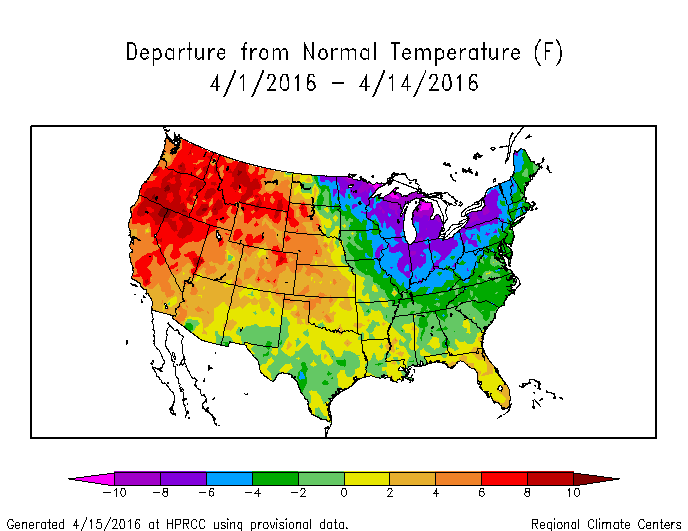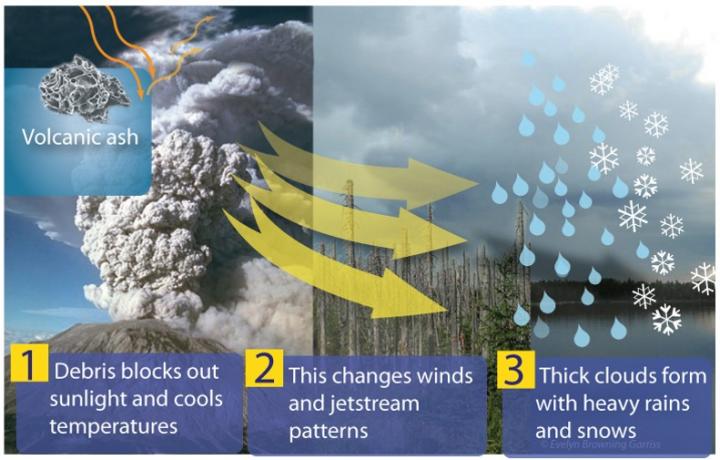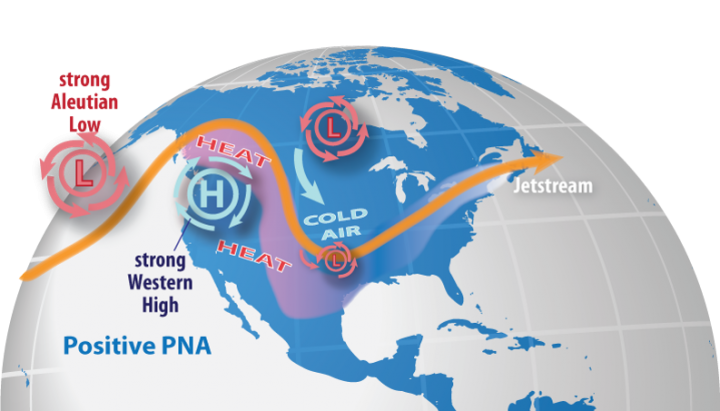Have you enjoyed shivering your way through the latest bout of volcano weather?
After a record-setting warm March 2016, early April was really cold in parts of North America.
Why the cold blast?
Two cold fronts whizzed in and sent temperatures plunging to record lows. It was a gift from Mt. Pavlof in Alaska.
Scientists have known for a long time that if a volcano eruption is big enough, it can alter weather. Back in 1815, Indonesia’s Mt. Tambora exploded and put up so much debris that it blocked incoming sunlight.
This lowered global temperatures and the next year was the notorious “Year Without a Summer”. Lakes and rivers iced over as late as July and August as far south as Pennsylvania.
BRRRR! Source: NOAA
Most volcano eruptions are smaller and have less dramatic effects, but if they can change the weather downwind from the explosion. The lucky Midwest and Northeast is downwind from Alaska and learned this lesson the hard way.

How large volcano eruptions alter weather. Source: Browning Media
On March 27 and 28, Mt Pavlof had an eruption that, at its peak, was spewing debris up to 7 miles into the atmosphere. While the eruption did not last long enough to alter the climate, it did affect the regional temperatures and wind patterns. With all the ash and sulfur, the air temporarily cooled and altered air pressure. This, in turn, altered wind patterns. The next two cold fronts caught the debris and were quite chilly. The jetstream dipped much farther south than it normally does.
This is typical of large Russian and Alaskan eruptions. History shows they alter temperatures, air pressures and wind patterns in North America. The polar jet stream flows strong, quick and far to the north in the West and dips unusually far south east of the Rockies. Scientists call this pattern a positive PNA (Pacific/North American).
Browning World Climate Bulletin warned on April 1 that the first two cold fronts that hit the Midwest and East would be dramatically cold. Indeed, parts of the Great Lakes and Northeast had more snow in April than they had had all winter! Now the fronts are past and spring is returning.

The typical jetstream pattern that follows large Russian and/or Alaskan volcano eruptions. Source: Browning Media
Hopefully you enjoyed the late taste of winter. Mt. Pavlof is quiet now and spring will bring flowers, pollen, occasional showers and warm, sunny weather.
Comments